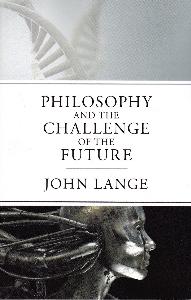

|
| ||
|
|
|
|
|
|
SILVER EDITION

|

|
SILVER EDITION |



Click on a cover to see a larger version... |
Copyright 2012 by John Lange Published by E-Reads, Ltd., New York First Printing - 2012 (May 11, 2012) EAN 978-1-61756-733-9 | ISBN 1-61756-733-7 Format: Paperback | (eBook) US 23.95 | 484 pages | 5.5 x 1.1 x 8.5 inches | 2.0 pounds Coverart by E-Reads Art Hi-Res: Front Back Spine Copy Details Scanned by: Simon van Meygaarden (20120728 20:27:58) |
 Notes
Notes Back Cover Text
Back Cover TextThe sciences, as opposed to politics and religion, have their roots in philosophy. Philosophy has been spoken of as the mother of the sciences, although she is, in many cases, more of a grandmother or great grandmother. Scientists were originally regarded as "natural philosophers," namely, philosophers interested in nature. There has often been an intimate relationship between science and philosophy, exceeding the facts of intellectual genealogy. The mansions of philosophy are best built, after all, on the foundations of fact, and she is deeply indebted to her "natural philosophers," whom, in my view, she is entitled to claim and see as her own. What wondrous contributions to a human world view, or world vision, are owed to Copernicus and Kepler, Galileo, Newton, and Einstein, Darwin, and Freud, and thousands of others. Philosophy divorced from nature is malnourished, if not starved, if not barren. The telescope and microscope contributed more to philosophy than Hegel and Aquinas.
A tension is generated, in eras of cognitive advance, between a status-quo, but revisable, "common sense" and new realities, new discoveries. One of the places where philosophy spends her time is the border territory between a new science and an old common sense. What sense can we make of new truths, new possibilities, in, say, reprogenetics, cloning, genetic engineering, artificial intelligence, artificial life, and such? How shall we think about them? Should they alter our view of the world, not merely additively, as in learning a new telephone number, but radically, as in taking seriously the hypothesis that wind is a meteorological phenomenon and not the breath of a god, that the earth moves, that man might be transformed and find himself become an alien onto himself. How shall we choose him to be?
Philosophy has new things to do, and new places to go.
It is time she started.
 High Resolution Images
High Resolution Images



Front Cover: JPEG 1000x1574 pixels, 8-bit sRGB, size 322KB Back Cover: JPEG 1000x1567 pixels, 8-bit sRGB, size 409KB Copyright Page: JPEG 1000x1608 pixels, 8-bit sRGB, size 106KB Horizontal Spine (no thumbnail): JPEG 1000x113 pixels, 8-bit sRGB, size 24.2KB Vertical Spine: JPEG 113x1001 pixels, 8-bit sRGB, size 23.2KB
 Full Size Covers
Full Size Covers


 This page is copyright © 2000/2013 by Simon van Meygaarden & Jon Ard - All Rights Reserved
This page is copyright © 2000/2013 by Simon van Meygaarden & Jon Ard - All Rights Reserved